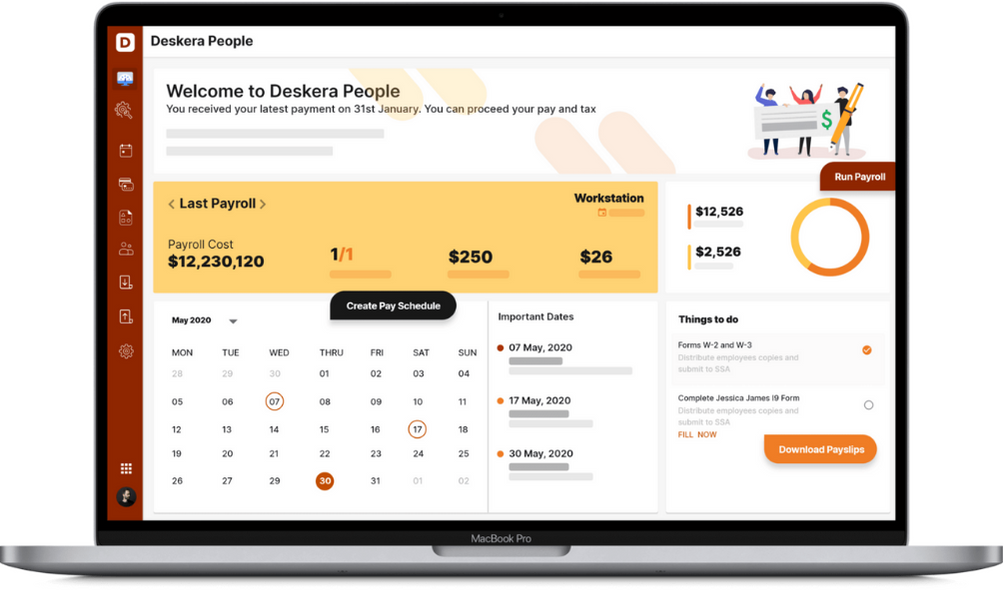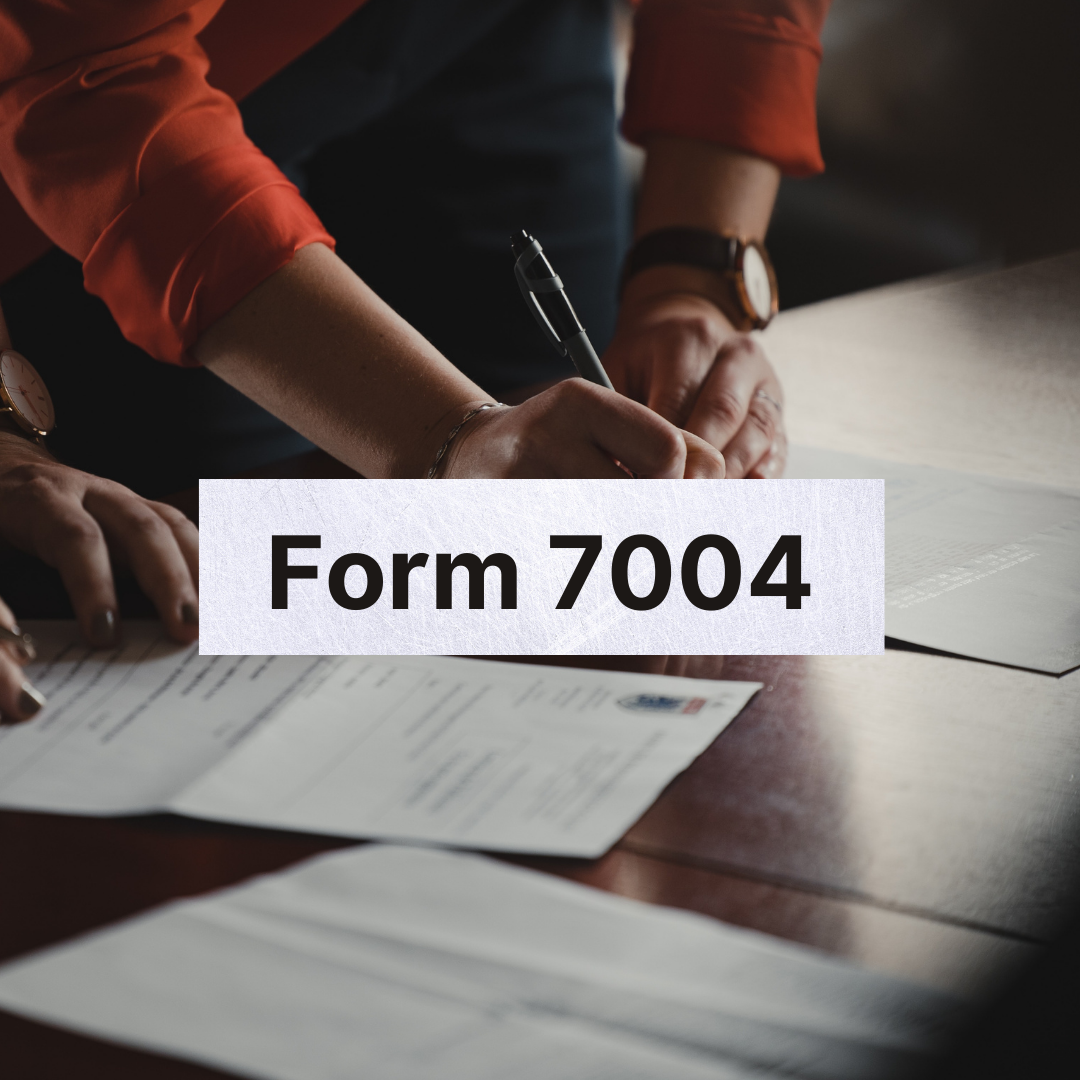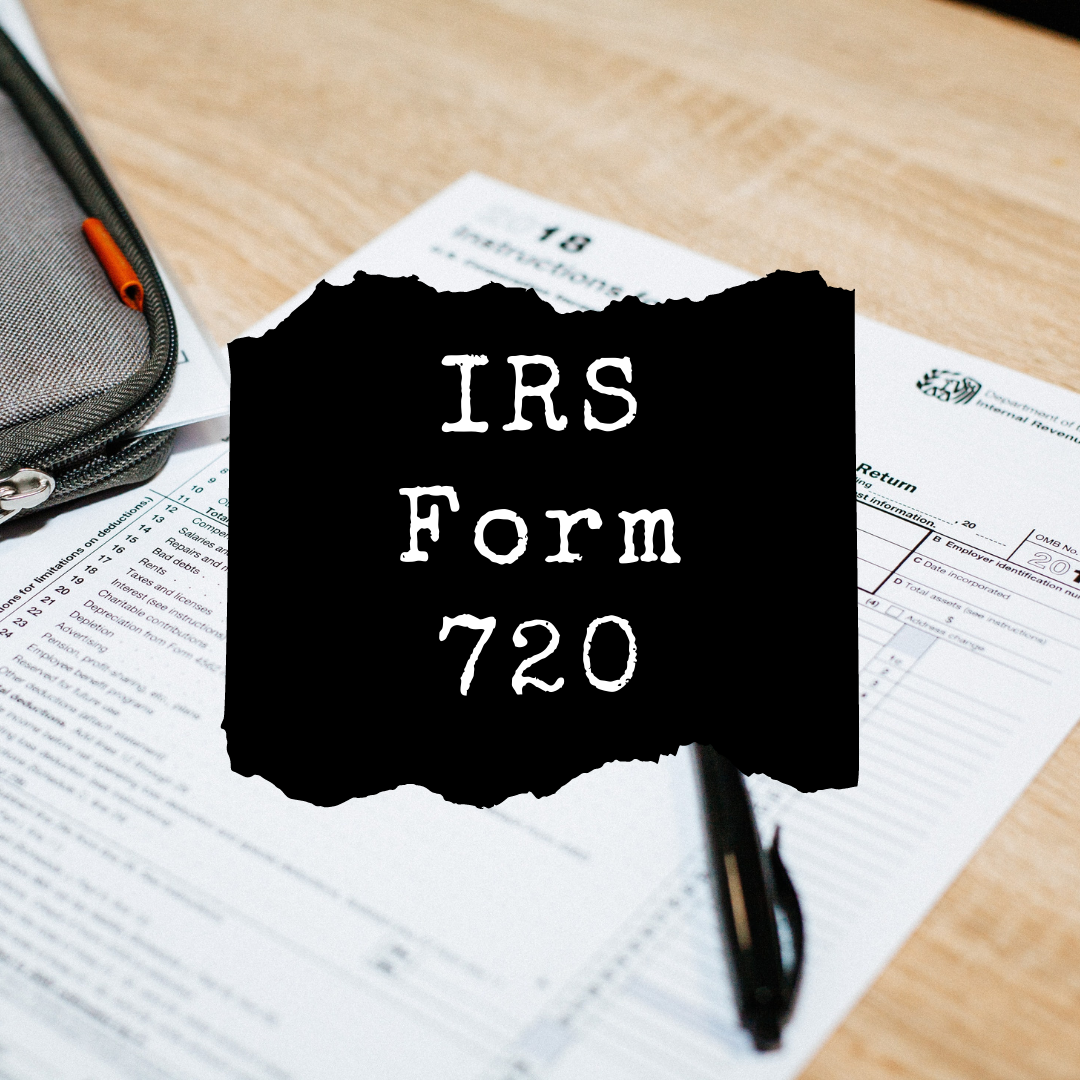Are you planning to move to the U.S. permanently for better job opportunities and lifestyle? While many individuals consider making this migration every year, some employees do get a chance to work in the on-site projects who are already in America as they had travelled for higher studies and are in the good books of the employer. If you want to become a citizen of this big economy and open a business, you must have a complete idea about the taxes in the country and even the W9 form.
We have included the following points in this blog -
- What is the W9 form?
- What information is needed on the W9 form?
- When not to fill w9 form?
- How to fill out the W9 form?
- What to do for the w9 form if I am a U.S. citizen or a resident alien?
- When to ask for the w9 form?
- What is backup withholding in w9 form?
- What are the special considerations when you file the w9 form?
- How to return the w9 form?
- Conclusion
- Key Takeaways
What is the W9 form?
According to available data, the W9 form is the tax form used by the Internal Revenue Services for the confirmation of a businessman’s name, address and taxpayer identification number to generate income and for employment purposes. It is known as a Request for Taxpayer Identification Number and Certification form. This form can be requested only by U.S. citizens or the person who can be categorized as a resident alien in the nation.
The W9 form provides the applicant with TIN when he is requested by the IRS to give necessary details about the business. Usually, this form is requested from the business owners who have employees on a contract basis.
A businessman can get this form on the IRS website with the following link -
Link - https://www.irs.gov/pub/irs-pdf/fw9.pdf
What information is needed on the W9 form?
When an employer has workers on a contractual basis, he might be requested to fill in their information by the IRS. The W9 form enquires about the independent contractor’s name, his business name if it is different from the businessman to whom services are being provided and what type of business entity the contract company is - it could be a sole proprietor, business partnership, S corporation, C corporation, a trust or an estate, a limited liability company (LLC) or any other. The sole proprietors in the U.S are the employers who do not use a separate tax ID number.
The employer has to give the following information to IRS when there is a request for this form -
- Income paid by the employer
- Real estate transactions
- Rate of interest for mortgage
- Acquisition or abandonment of secured property of the company
- Debt cancellation for an employer
- Contributions made to an IRA
Furthermore, the person who is going to file this W9 form must certify that he is not withholding any amount from the paystubs of their employees. Usually, most taxpayers know the rule and will not withhold any type of amounts such as social security, medicare or FUTA from the employee salaries. However, if the employers hire independent contractors for business, they are permitted to withhold income tax from the contractor’s paystub at a rate of 24% and deposit it to the IRS. This rule applies to the employers for the period 2018-2025.
As per the data available from sources, this form requires the listing of a tax ID or social security number by the employer. The company that is going to receive this form must keep the completed form under stringent protection when the paycheck transmission is taking place and also guard its receipt. This is crucial for the employer and the other business owner to prevent identity theft and mishandling of transactional fees.
When not to fill w9 form?
The independent contractor who provides services to the employer must think twice before filling the w9 form if he has got an unexpected request from the American government. He should first do thorough research about why the requestor has given this request and understand his legitimate reason for the need for the w9 form before directly filling it.
According to the available data, financial institutions such as banks make use of this form to issue a request from the customers. It helps them to report the interest or dividends to the customers. The only condition is the concerned financial institution must have its tax ID number which is linked to the account from the date when it was opened.
Another situation when an individual must show precaution while filling this form is when the company specifically asks him to fill it. It means that the employer has classified the individual as an employee of the organization and does not list him under the category of independent contractors.
How to fill out the W9 form?

The w9 form is considered to be one of the most straightforward forms on the IRS website. Let us understand how to fill this form in a stepwise manner -
- Name: The employer must write his name in the same way as indicated in the income tax return.
- Business Name: The business owner must write the name of his business if it is different from the name mentioned in step number 1. It could be the business owner is a sole proprietor, the disregarded entity where you are the only member which is commonly known as LLC.
- Enter the type of business: The business owner must specify the type of business entity in the third line which is required in the classification of federal taxes by the U.S. government. The government classified the w9 form applicant under the categories namely sole proprietorship, partnership, S corporation, C corporation, trust or estate, LLC and others. The employer needs to check the correct box in the list. If the employer is not the sole member of his organization, then there is a lot of other paperwork involved.
- Be knowledgeable about the exemptions: The business owner must have a good idea of the different exemptions available in the w9 form. It ensures that he does leave them blank. The different exemptions in this form are -
a. Exempt payee code
b. Foreign Account Tax Compliance Act (FATCA)
5. Address: The employer must properly address his company with the city, state and zip code. If there is a difference in the personal address of the small business owner and his company, then he should provide the address used in the income tax return for the w9 form. The employer who is working as a sole proprietor and has rented out the work location must fill in the home address if he uses the same for filing tax returns. Doing so ensures there is no trouble for the IRS employer to match his form 1099s with Form 1040.
6. Requestor name and address: This is considered to be an optional step in which the one who fills the w9 form has to provide details of the requestor and his address. It is always a good idea to fill in this information as it helps the business owner have a record of to whom he is providing his tax identification number.
7. Part I: The IRS refers to this section in w9 form as part I. In this section, the employer must give details of a business tax identification number which could either be an individual social security number (SSN) or employer identification number (EIN) provided by the IRS. If a sole proprietor also has EIN then the IRS states them to use SSN on the w9 form which makes it easier for IRS professionals to match with the 1099s received with tax returns.
If you are a small business owner or entrepreneur who has just started a business, you can still fill out the w9 form. In such cases, the employer can write “Applied for TIN” in this box. Until the number is received, the individual will be subject to backup withholding which will be discussed later in this blog.
8. Part II: The part II of the w9 form is for the employer to attest to certain listed copies by the IRS to guarantee the truthfulness of the filled information. If the business owner fails to do so and lies on this tax form, it could mean a heft fine and even land him in jail in the U.S. The statements to be certified true before signing the w9 form are -
a. Correctness of the taxpayer identification number or if he is waiting for the allotment of the same
b. A statement that says that the employer is not subject to any backup withholding or has not received any notification from the IRS due to failure of reporting the dividends or interest, or getting a notification from the government site that he no longer is subject to backup withholding.
In this section of the form, most employers have very less idea about what the IRS wants to say here. If you have no understanding of the above statements, it means the employer is exempt from backup withholding. In another scenario, the business owner will receive a notification from the IRS which means he will be compelled to pay 24 per cent (as per the year 2020) to the IRS.
What to do for the w9 form if I am a U.S. citizen or a resident alien?
If an individual is counted as a resident alien in the U.S, he is clear to fill the w9 form. According to the rule, the IRS has included the following categories under the label U.S. citizen - business partnership, corporation, association company in the U.S created under a partnership or the laws of the domestic region. If there is a foreign partner in the business, then the government has different and special rules for them for this form.
If the individual is not a citizen of America and still takes employees on a contract for doing business, then he should fill the form 8233 or form w-8 instead of the form being discussed here
What is the FATCA code?
The business owners might not worry about this code if it is already stated in the form that the applicant is exempt from FATCA reporting.
When to ask for the w9 form?
A business owner can ask for this form when he starts working with a contractor or a freelancer before beginning the work. Requesting the form before engaging in work can prove beneficial for both the employer and the contractual service provider. In case, he fails to do it at the start, it could add to troubles later. Hence, any small business owner or employer must ask for this form before starting any kind of work with a person or other business. If the employer fails to provide you with the w9 form, the contractual business owner has every right to ask for this form from him. If both the parties forget, then a need for backup withholding might arise in business.
What is backup withholding in w9 form?
According to the definition, backup withholding in w9 form can be defined as the money taken out from the pay and deposited with the IRS from the income payments. This amount is not considered under the amount that is purposefully withheld by the employer for various business reasons. Under the IRS rule, the taxpayers can be subjected to backup withholding by IRS if they fail to provide a correct TIN in this w9 form.
The IRS can also give a backup withholding to the taxpayer if he has not yet received the TIN or if they believe that the individual owes them a specific amount which they are not able to collect by using any other method. Also, the department can subject businesses or other individuals to backup withholding if they have not reported dividend reports or interest reports to the concerned official in the IRS department. In such cases, the taxpayer can withhold a 24% amount from the IRS in the following situations -
- Failure to get TIN or provision of an incorrect TIN by the IRS
- IRS tells the taxpayer to withhold taxes as he has a history of underreporting his tax return
- The taxpayer fails to certify that he is no longer subject to backup withholding
This can be avoided by the employer and even individual taxpayers by giving accurate information about the request of the w9 form and paying appropriate taxes for the current financial year.
What are the special considerations when you file the w9 form?
The w9 form suggests crossing out item 2 above for the taxpayers as business owners if they have received a notification from the IRS that are currently subject to backup withholding. The reason for backup withholding is as stated - failure to report interest and dividends on the tax return. Also, he can cancel item 2 if he is filing this form in connection with some real estate transaction to add a new property to business as it remains irrelevant when the taxpayer is subject to backup withholding.
This fine print of form w9 states that individuals aren’t usually required to fill and sign this form unless there is a specific notification from the IRS for incorrect TIN. Moreover, the person who has requested this form will consider it incomplete if it is not duly signed by you.
How to return the w9 form?
The taxpayer or business owner must return a completed w9 form to the other industrialist who asked him to fill it with proper care to prevent identity theft. The business owners can resort to mail and encryption for the complete protection of the form. Furthermore, before pressing the send button to deliver the message, both parties must verify the email address of the recipient to prevent information from being leaked to a third party. There are multiple services available online for the taxpayers who want to get it done from service providers instead of putting their valuable time into this form. However, it is always advised by tax professionals to be very careful before trusting all the financial documents and important information to them if they have no particular reputation in the industry. According to the sources, usually, the businesses that need this w9 form provide a form to the other individual or business owner when it is needed.
Conclusion
The W9 form is to be filled by the business owners or taxpayers who take the services of other business owners that employ contractual workers for the job. Also, this form is to be filled only when there is a request from the employer requesting it or if there is a notification from the IRS. There are many rules associated with the sole proprietor for this form. Deskera when helping business owners in America to know about taxes, payroll, accounting, hiring of employees and many other fields in business.
How Can Deskera Assist You?
As a business, you must be diligent with employee leave management. Deskera People allows you to conveniently manage leave, attendance, payroll, and other expenses. Generating payslips for your employees is now easy as the platform also digitizes and automates HR processes.

Key Takeaways
- The form w9 is used by the IRS in America to confirm the tax identification number which is necessary to generate income and even provide employment to people.
- The request for this form can be sent by a business owner who needs it to the other business owner or you can receive a notification from the IRS.
- This form gives information about the contractual workers employed in business by the entrepreneur and also tells about the business type. It specifies the real estate property transactions done for business, mortgage interest rate and what type of business entity the other party is - sole proprietor, LLC or independent contractor
- The business owner must provide the same address with pin code, and the region as given on the income tax return form to help the IRS 1099s with form 1040.
- As per the rule 2020, the taxpayer has to pay 24% of the contractor’s paycheck and give it to IRS. This rule has been fixed for the tenure of 2018-2025.
Related Articles












